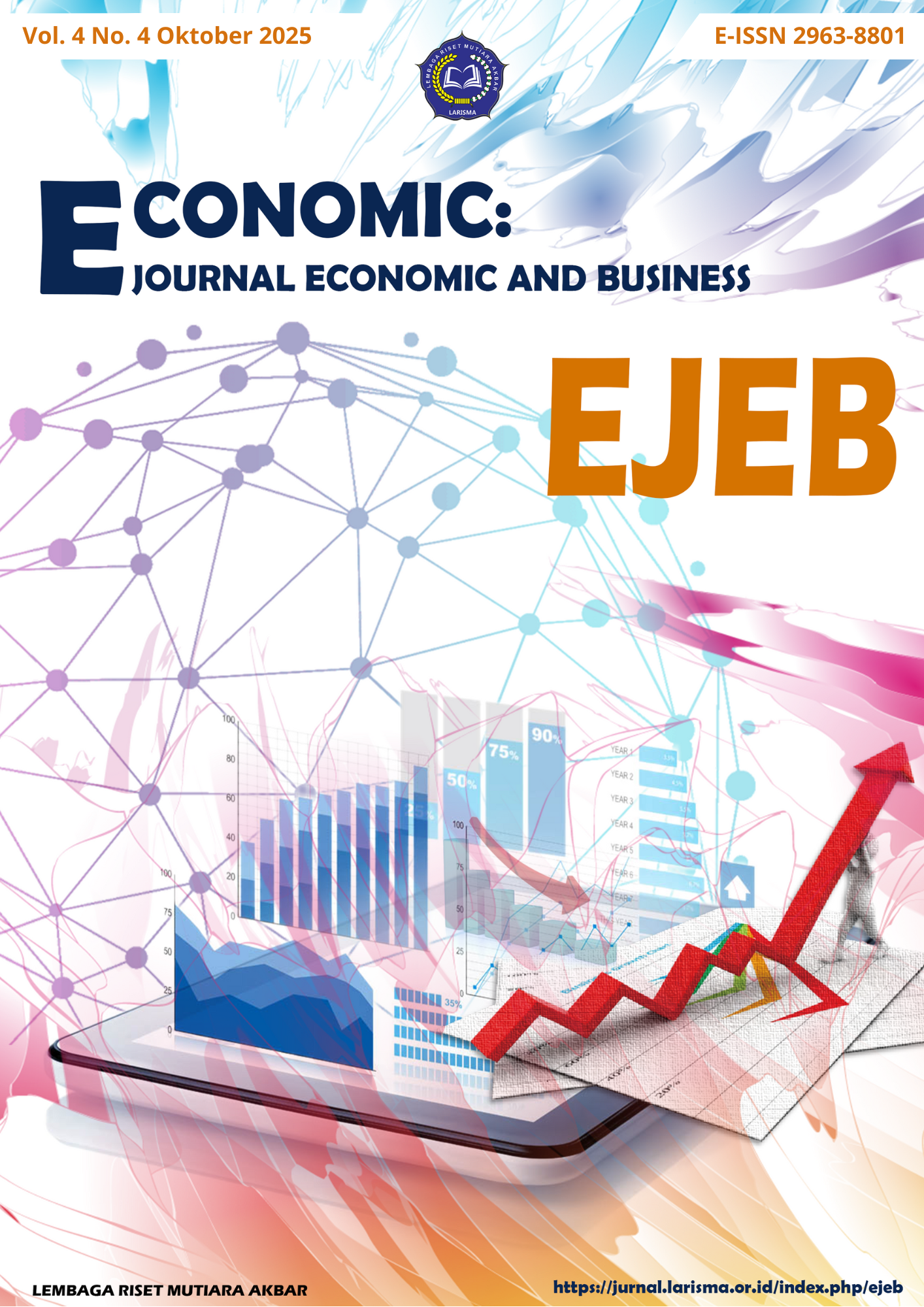Analysis of Grab Customer Satisfaction Levels in Makassar Based on Service Quality, Ease of Operation, and Promotional Strategy
Main Article Content
Abstract
This study investigates Grab customer satisfaction in Makassar based on service quality, ease of use, and promotions. The persistent issue of customer dissatisfaction, which may impact user loyalty, is addressed. The extent to which these elements contribute to user satisfaction is the objective of this study. A survey was conducted among all active Grab users in Makassar. A purposive sample of 150 individuals who had used Grab services at least five times in the past three months was selected. The influence of the independent variables on the dependent variable was measured through multiple linear regression data analysis. The results showed that service quality and ease of use had a positive and significant effect on customer satisfaction, and promotions also had a positive and significant effect on customer satisfaction.
Article Details

This work is licensed under a Creative Commons Attribution-ShareAlike 4.0 International License.
References
Ali, F., Hussain, K., & Rasool, M. F. (2016). The impact of service quality on customer satisfaction in the hospitality industry: A case study of Pakistan. International Journal of Hospitality Management, 55, 93–102.
Bakar, A. A., Ali, M. H., & Nadarajah, D. (2021). Customer satisfaction and loyalty in online ride-hailing services: A systematic review. Journal of Business Research, 129, 234–243.
Bhandari, M., & Kaur, S. (2021). Customer satisfaction in service sector: A review of literature. International Journal of Business and Management, 16(5), 1–10.
Brown, S. A., Venkatesh, V., & Hoehle, H. (2015). Technology adoption decisions in the household: A seven?model comparison. Journal of the Association for Information Science and Technology, 66(9), 1933-1949. https://doi.org/10.1002/asi.23305
Chechi, P., Chaurasia, S. K., & Sahu, R. (2020). Promotional strategies in service sector: A review. Journal of Marketing Research, 12(2), 55–67.
Davis, F. D. (1989). Perceived usefulness, perceived ease of use, and user acceptance of information technology. MIS Quarterly, 13(3), 319–339. https://doi.org/10.2307/249008
Fitri, A., Nasution, M. A., Utami, A. P., Toruan, A. M. L., & Panjaitan, B. M. (2023). Comparison of Medan State University students' preferences for online motorcycle taxi platforms: a case study on gojek and grab. Economic: Journal Economic and Business, 2(3), 91-95. https://doi.org/10.56495/ejeb.v2i3.691
Hu, P. J.-H., Guo, H., & Zhang, Z. (2022). The influence of user experience on mobile app adoption: A study of mobile health apps. International Journal of Information Management, 63, 102452.
Kotler, P., & Keller, K. L. (2016). Marketing management (15th ed.). Pearson.
Oliver, R. L. (1980). A cognitive model of the antecedents and consequences of satisfaction decisions. Journal of marketing research, 17(4), 460-469. https://doi.org/10.1177/002224378001700405
Parasuraman, A., Zeithaml, V. A., & Berry, L. L. (1988). SERVQUAL: A multiple-item scale for measuring consumer perceptions of service quality. Journal of Retailing, 64(1), 12–40.
Sharma, N., & Sushil, M. (2021). Impact of promotional strategies on consumer purchase intentions: A study on Indian e-commerce sector. Journal of Retailing and Consumer Services, 59, 102330.
Wibowo, A., & Pramudito, A. (2020). Analyzing service quality, customer satisfaction, and customer loyalty: A study of online transportation in Indonesia. Management Science Letters, 10(2), 315–322.

